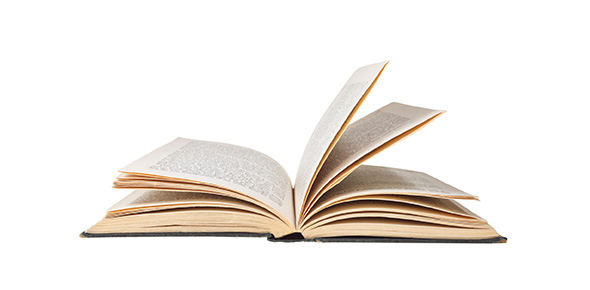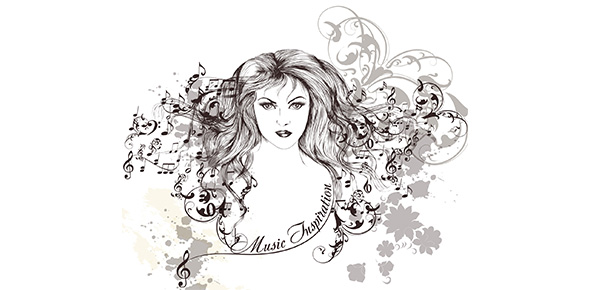Related Flashcards
Related Topics
Cards In This Set
| Front | Back |
 Caves of Lasceaux |
Paleolithic ArtFrance15,000-13,000 BC
Description: Famous for the large paintings of animals on the roof and walls. The most famous part is the Hall of the Bulls, that is covered in paintings of bulls. |
 Chauvet Cave |
Paleolithic Art France, near Avignonca. 30,000 BC
Description: Contains some of the oldest known cave paintings. |
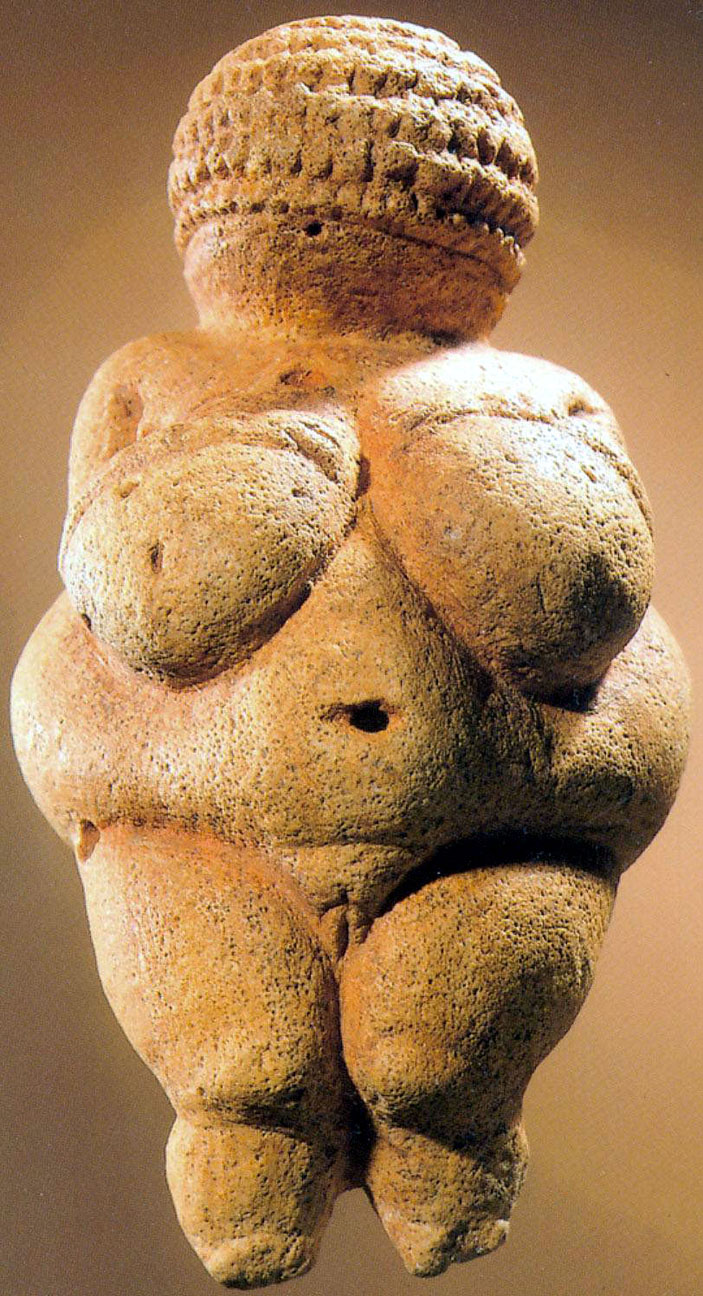 Venus of Willendorf |
Paleolithic Artca. 28,000-25,000 BCDescription: Viewed as a fertility figure. One of the first human sculptures known. Made of limestone.
|
 Stonehenge |
Neolithic ArtEnglandca. 2000 BCDescription: The most famous megalithic monument in Europe. Megalithic stones are arranged in a circle. The positioning of the stones correspondes to the movement of the sun. The purpose of this structure is unknown.
|
 'White Temple' Ziggurat |
Art of the Near EastSumerian ArtUruk (Warka) ca. 32000-3000 BCDescription: Using only mud bricks, the Sumerians erected these structures; the most famous is the tower of Babel. This temple is unique, because it has not eroded down to its foundation, and it is one of the only intact temples that we have today.
|
 Ziggurat |
Art of the Near EastSumerian ArtUr (El Mugeiyar)ca. 2100 BCDescription: This is a temple that is built to honor the gods of the Sumerian city-states. Very few are left intact today, because they are prone to erosion.
|
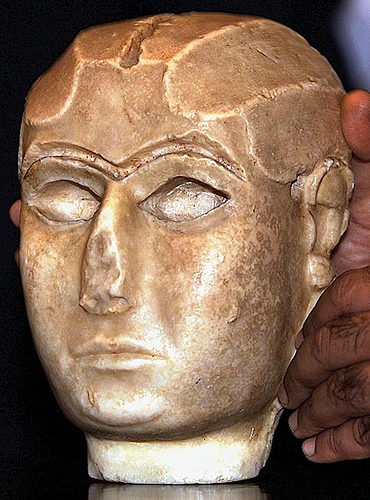 Female Head, Inanna |
Art of the Near EastSumerian ArtUruk (Warka)ca. 3200-3000 BCDescription: A female head made out of marble. It was originally created as a likeness of the Sumerian goddess Inanna.
|
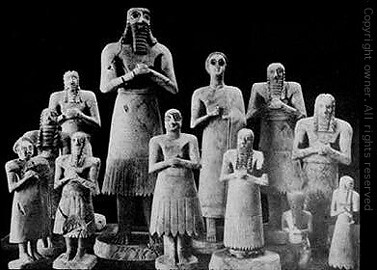 Abu Temple Statuettes |
Art of the Near EastSumerian ArtTell Asmar ca. 2700 BCDescription: These statuettes are meant to be worshipers coming to pray to the gods and goddesses of the Sumerian city-states. They range in size from 1ft to 3ft. They are made of soft gypsum, shell and black limestone. Their eyes are exaggerated, probably to symbolize their ever watchfulness towards their gods.
|
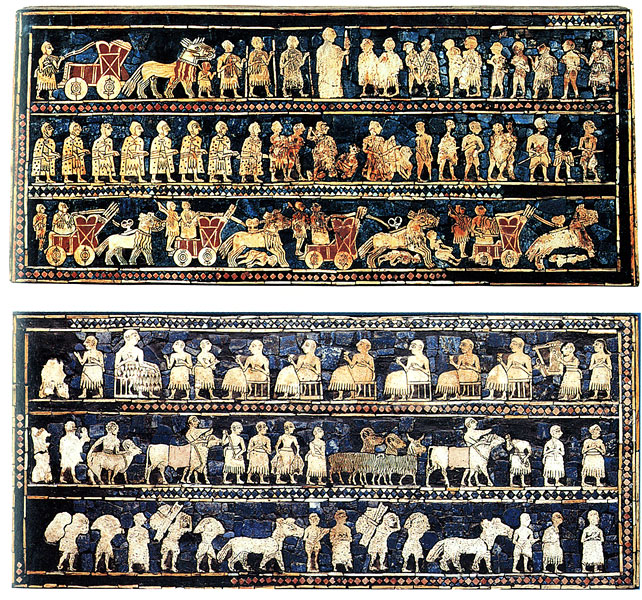 Standard of Ur |
Art of the Near EastSumerian ArtRoyal Cemeteryca. 2600 BCDescription: A historical narrative carved in wood and inlaid with shell, lapis lazuli, and colored limestone. It has a 'war side' and a 'peace side' showing the prosperity of the city-state of Ur. Historians originally thought that it was to be displayed on poles as a standard when going into battle.
|
 Inlaid Harp with Bull's Head |
Art of the Near EastSumerian ArtRoyal Cemetery of Urca. 2600 BCDescription: A musical instrument, commonly known as a lyre, that has a bull's head sculpted onto the sound box. It also has an anthropomorphic narrative inlaid into the sound box.
|
 Bronze Head of a Ruler |
Art of the Near EastAkkadian ArtNinevehca. 2200 BCDescription: What's left of a statue of an Akkadian King. The head is all that's left after the society was vandalized. The sculptor paid extensive attention to the facial features of this king, unfortunately they were deliberately mutilated by the raiders.
|
 Victory Stele of Naram Sin |
Art of the Near EastAkkadian ArtSusaca. 2200 BCThis carving commemorates a king's victory over his enemies. The king is shown in larger than life scale, with three favorable stars over his head, and his enemies fall down the mountain side.
|



